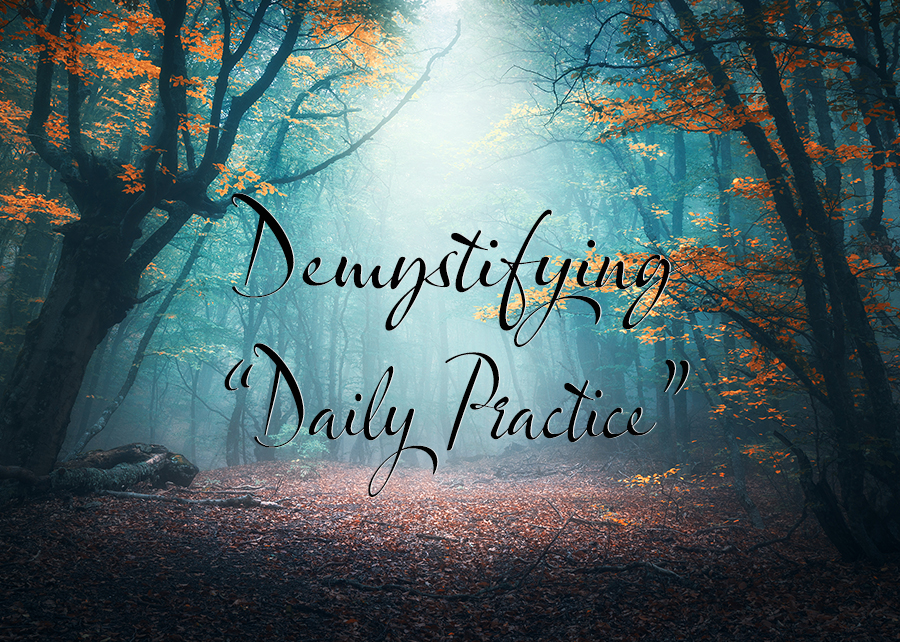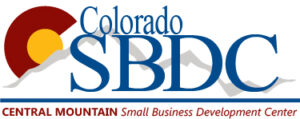Demystifying “Daily Practice” By Heather Barron
How to bring greater balance into your life one day at a time – Heather Baron – Founder of Luminous Life, Inc. Heather is an Integral Life & Mindset Coach, Writer, Speaker luminous-life.com
The words “Daily Practice” bring great joy to some. But if you are anything like I’ve been in the past, perfectionism, resistance and a whole host of other things have gotten in the way of creating a sustainable Daily Practice – even though we fully understand the benefits of having one!
This blog is about what gets in the way of us choosing the very thing that could bring more balance into our daily lives. We will start by demystifying the phrase “Daily Practice.” Then we’ll walk through a “Process of Discovery” to help us identify a Daily Practice that works for us.
To keep things simple, we will return to a basic elementary school lesson for the Discovery Process: Who, What, Where, When, Why, How (but because we are playful, we will look at them in a different order!).
Your WHY:
This is how we demystify the concept of “Daily Practice.” Oxford English Dictionary defines the word practice as: The actual application or use of an idea, belief, or method, as opposed to theories relating to it; and also as Repeated exercise in or performance of an activity or skill so as to acquire or maintain proficiency in it. For the sake of life-balance, Daily Practice helps us move from our theories about life into our hearts and actual embodiment of life.
WHY HAVE A DAILY PRACTICE (and why haven’t I been able to stick to one that works)?
Barring any recent twists in life, we are already living a life we have practiced our way into. So it isn’t that we don’t know how to “do” daily practices. If we are seeking greater balance in our lives it is because what we are currently practicing on a daily basis – consciously or unconsciously – is not necessarily aligned with what we most desire to have and to experience in our lives. As a Perfectionist, I’ve wrestled with this too. Even as a Life Coach for others I get so swept up in the endless lists of everything that “has” to happen each day for life to continue. And I often hear my internal response of: “I don’t have time to do anything about this!” when I can feel my life is out of whack. But when I get honest with myself, realizing no one else can bring more balance to my life except for me, then I can see the work that is mine to do to create the change I long for.
Until we practice something new, the old default setting will run our lives. When we PRACTICE something new (something we want to have in our lives), we’re REPLACING something old and stale that is not working for us. This can feel overwhelming at first, no doubt! But, if we are truly wanting more balance, we will get to a point where maintaining the old way is more exhausting than trying to learn a new way. And that is where the magic of a Daily Practice can make all the difference.
For the other Perfectionists reading this: PRACTICE IS MESSY – at first. Have you ever been to a soccer practice for 5-7 year olds? Or seen Pinterest Fails compared to the perfect cake/painting/vase they were trying to recreate?For us Perfectionists, we need additional layers of PERMISSION and TIME on our foundation before we introduce new practices. We need to give ourselves permission to be messy, inconsistent, and imperfect at anything new we are trying to introduce into our lives. And we need the time to sort through whether this newness is just uncomfortable because we are not perfect at it yet, or if it is something that actually doesn’t work for us (and there is good support for this process!).
IF PRACTICE MAKES PERFECT, WHAT ARE WE ALREADY PERFECTING?
So what ARE we practicing each day? Let’s look at this so that we can see where there may be an imbalance for us. This will help point us in the direction of our “What” – the right Daily Practice for us.
- Are we practicing gentle, empowering inner conversation with ourselves, or are we practicing negative and defeating self-talk?
- Are we practicing “busyness” and “not enough time,” or are we practicing listening to the right order of our day to make time for what matters most to us?
- Are we standing up for ourselves in a culture that has a gravity to wear us down and strip us of our equanimity, or are we in default mode just following the trail of fires that “need” to be put out?
- Are we practicing saying “No” to additional commitments and requests for helping others that we know won’t allow us to maintain a healthy balance, or are we saying yes out of guilt, wanting to be liked, wanting to be perceived as helpful and then resenting ourselves and others later?These are not easy questions to dig into for ourselves. But to get to truly understand how to bring greater equanimity to our lives, we need to get honest with what is already in place as our daily operating system. We need to see our current imbalance to know where to focus to create greater balance in our lives.
-
WHAT DO I WANT MORE OF IN MY LIFE?
My WHAT: What is it we actually need in our day to balance it out? This is not the same for all of us. Here is a quick list to look through. Close your eyes. Take three deep breaths letting your attention drop down out of your head and into your heart. Place your hands on your heart and ask through the following list. “What do I feel is missing in the balance of my daily life?”
1.Calm
2.Stability
3.Joy
4.Self-knowledge
5.Fullness
6.Satisfaction
7.Peacefulness
8.Wisdom
9.Solitude
10.Processing Time
11.Depth
12.Rest
13.Creativity
14.Voice
15.Boundaries
For your WHAT, choose one or two of these qualities that you most long to have more of in your life. This will be your focus for finding a Daily Practice that works for YOU.NOW FOR THE WHERE WHEN & HOW
My WHERE, WHEN and HOW: Now we get to explore what works for us! Each of us has different needs. So let’s discover YOURS.
This part of the process is meant to be a heart-date. Set time aside to have a date with your heart – even for 15 mins in your back yard with your journal or a notebook (or in your car in the driveway, or in the bathroom with your toddler locked out!). Settle into a chair and take a few deep breaths. Feel yourself being held.
Now take 5-10 minutes to journal through the following to get clear on your Where, When and How for your Daily Practice.1.What is the best time of day for me to fit in a Practice right now? Am I a morning person, a Night Owl, or some combination?
2.Where could I do my Practice? Is there a quiet space I can create/use to honor my Practice? Or can I use tools like noise-cancelling headphones, eye-mask, etc, to create a quiet space?
3.How do I need to prepare ahead of time to carve out the space and time I need? Do I need to ask for help (“Honey, would you be willing to read the kids bedtime stories and keep them in their room for 15 mins each night while I disappear into the garage for my Practice?”)?
4.Can I give myself Permission to make this one of my biggest priorities? Committing to a Daily Practice that can bring greater balance is a gift to myself but it is also a gift to all I am responsible to. Write yourself the Permission Slip you need to allow yourself to do your Practice.
Next, using a search browser, type in Daily
Practices for {YOUR WORD HERE – Restfulness, greater Joy, etc}. Spend 5-10 mins looking until something fits with what your needs and abilities are. You can make a list of different practices that speak to your heart (this is not the same as ones that just “sound good” or that worked for someone else).
Choose one to start with. START SMALL – 5 minutes, or 10 minutes at most. You can always add but start with something that you can fit in each day.
NOTE: I do recommend, if you are able, to have the same location as much as possible. This helps you to tune in more quickly because you gain a felt reference of place = activity. – CAN I GET A WITNESS?
My WHO –
The final piece of this Process of Discovery is determining WHO we can ask to support this Practice, either through being our accountability person, our babysitter, our cheerleader, or even our partner in the Practice. Accountability can be the key – having someone we shoot a quick text to with a daily check-mark or emoji we’ve chosen can be the final ingredient.
THE BALANCING ACT –
To truly feel balanced is not necessarily the result of adding things to a different side of the scale. Instead, I invite us to think of Daily Practice as a way to create a stronger more stable foundation on which we, as whole and complete women, stand.
When we start from a place of I am enough, then the practices we explore do not have the power to make or break us, do not have the ability to make us feel like successes or failures.
Instead, standing on a firm foundation, anything we add as a Daily Practice is meant to ENRICH and UPLIFT and GROW us. When this foundation it is solid, we are more balanced.
And yes, all this can be done in 5-10 minutes a day.
|






